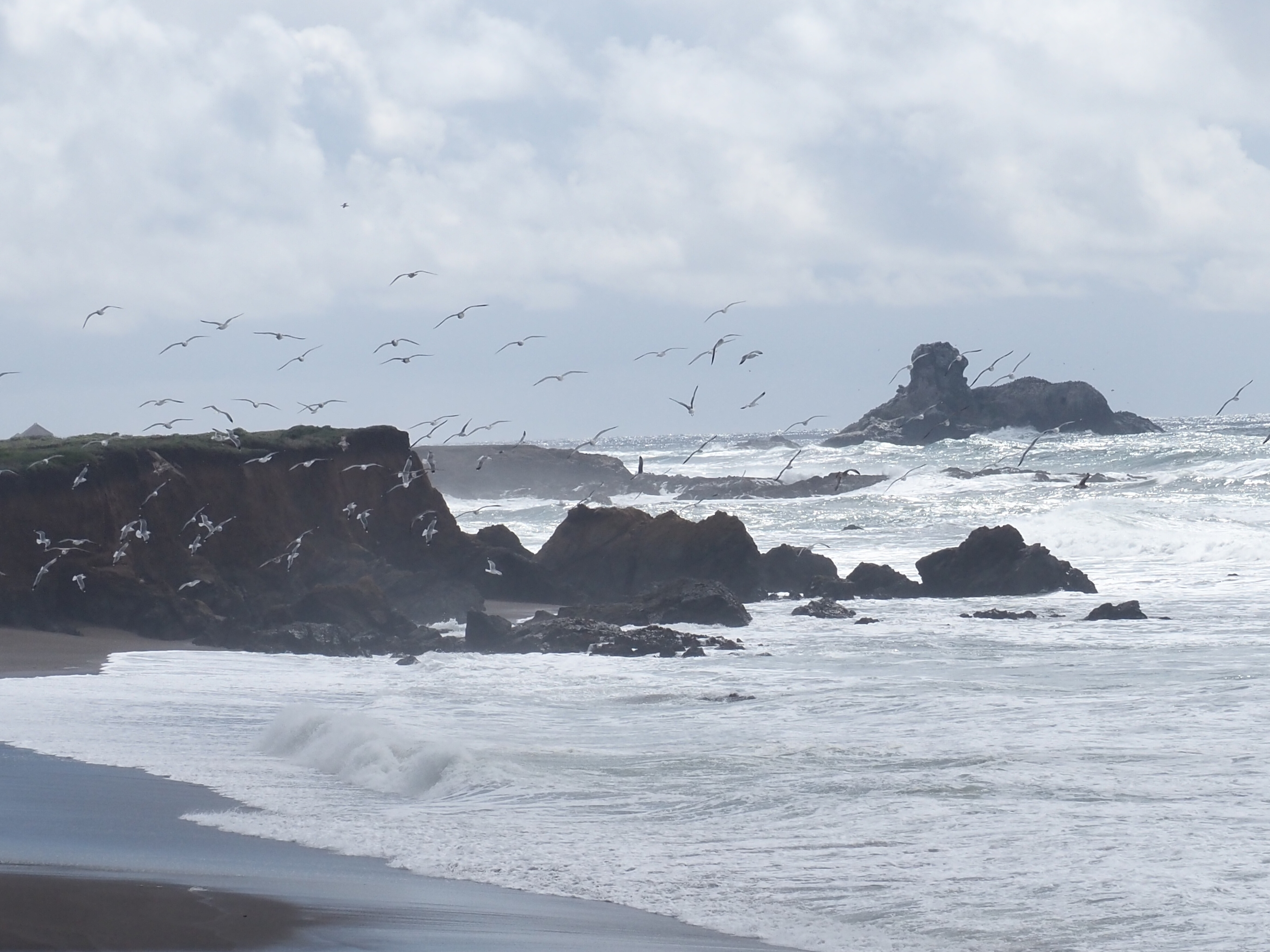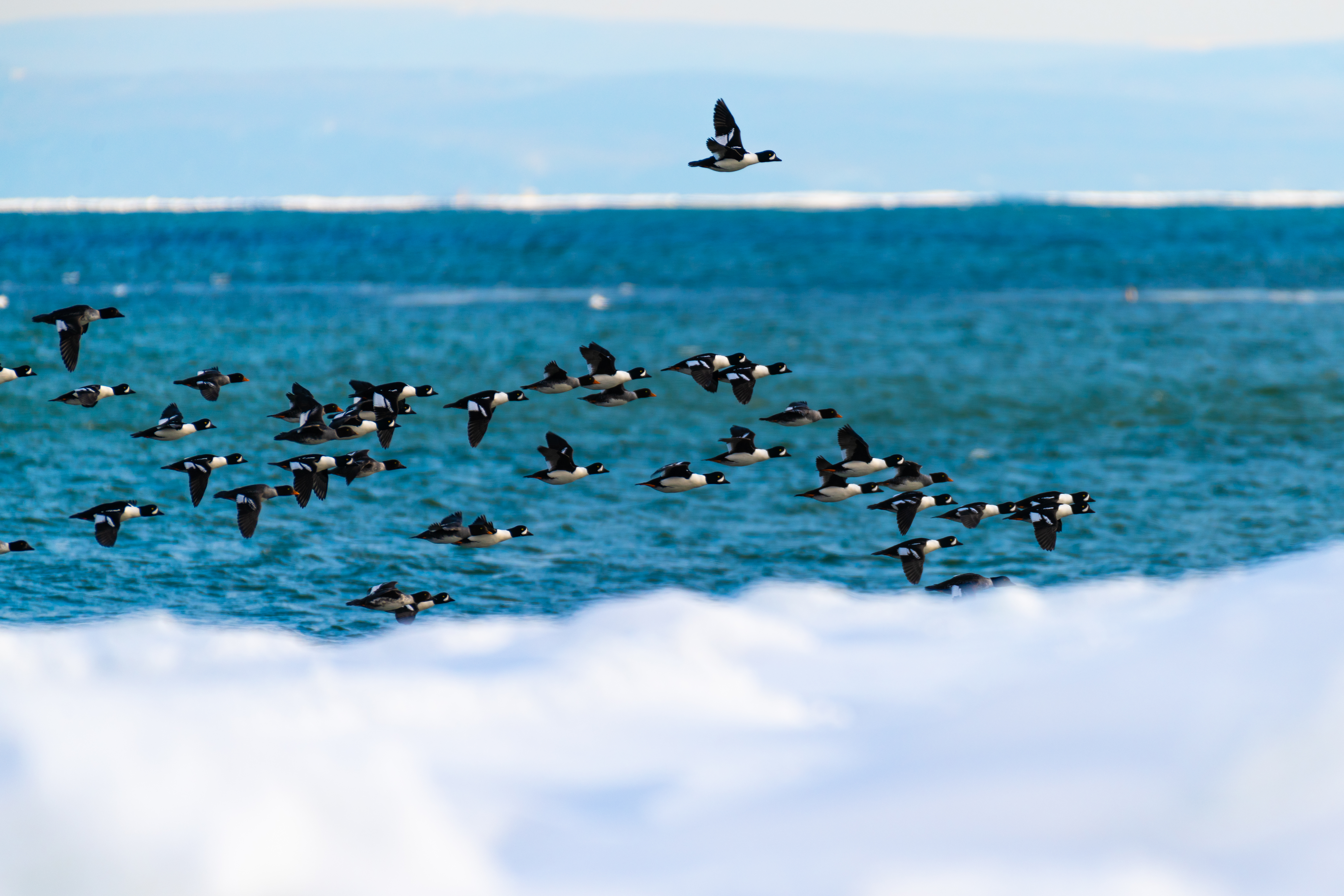Good news for calves! In 14 hours with belugas, we conducted four censuses and a total of 10 calves were observed. Here is one impressive series of events for the week.
August 20, 2015, 12:50 pm: The shallow waters south of Île Rouge are often the scene of interesting encounters. Skirting the western tip of the island, we spot a herd of about sixty individuals, including adults and young. Quickly, our attention is diverted by a highly agitated group. Forceful splashing, tail-slapping, sudden changes of direction…and a pink spot on a white belly. As we approach them, we discover that these belugas are engaged in sexual activities. These pink spots are actually penises; during this observation, we would see many. In fact, ten young males (of considerable size, but not entirely white) surround a young female. She is still quite gray. The males prevent the female from escaping. Several of them attempt to mate with her. Although we are outside the breeding season (belugas breed in the spring), we occasionally witness sexual activities in summer. These sessions might be a training of sorts! The participation of multiple males is not unusual. Given that adult females can give birth to one calf only once every three years, each year there are far fewer females available for reproduction than males who are eager to pass on their genes. We believe that the formation of companion groups in adult male belugas is actually a collaborative strategy to monopolize access to females during the breeding season. In summer, the young males might be training for these essential activities.
Click on the map to navigate with the Bleuvet and discover the highlights of the week! Although this map is only available in French, the image it illustrates goes beyond language.
IDENTIFICATION OF THE WEEK
Annakpok – adopted in 1992 by Canada Steamship Lines
DL0058 – Available for adoption
DL9031
DL0473
DL1610
DL2217
 Property of the GREMM and the St. Lawrence National Institute of Ecotoxicology, the Bleuvet is a research boat dedicated to the research program on St. Lawrence belugas. Managed by GREMM scientific director Robert Michaud, the Bleuvet crew is composed of Michel Moisan, Tim Perrero and Simon Moisan.
Property of the GREMM and the St. Lawrence National Institute of Ecotoxicology, the Bleuvet is a research boat dedicated to the research program on St. Lawrence belugas. Managed by GREMM scientific director Robert Michaud, the Bleuvet crew is composed of Michel Moisan, Tim Perrero and Simon Moisan.





